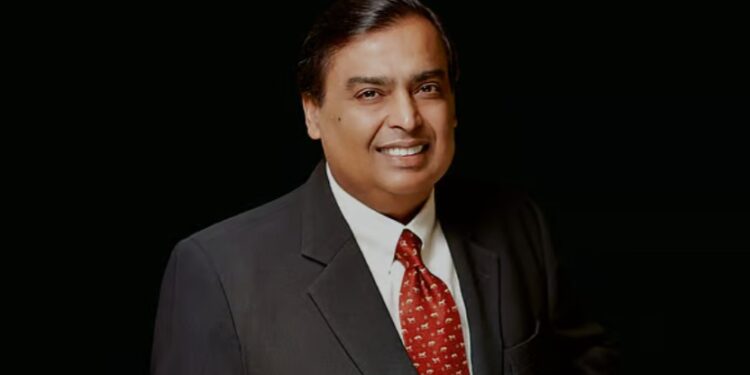Mukesh Ambani, o segundo homem mais rico da Ásia e líder do conglomerado Reliance Industries, é conhecido por sua habilidade em transformar indústrias de maneira radical. Quando ele decidiu entrar no mercado de telecomunicações em 2016 com a Reliance Jio, ninguém esperava que ele entregaria um golpe tão devastador aos seus concorrentes — literalmente reinventando o jogo da telefonia móvel na Índia. Agora, sete anos depois, Ambani está dando outro passo gigantesco ao anunciar um investimento colossal de US$ 25 bilhões para lançar a maior e mais avançada rede 5G do mundo.
A Estratégia que Chocou o Mercado
Quando a Jio foi lançada, Ambani adotou uma abordagem que parecia insana à primeira vista: oferecer serviços gratuitos por quatro meses. Isso incluía dados ilimitados, chamadas de voz gratuitas e acesso a aplicativos premium sem custo algum. Enquanto os concorrentes riam, achando que ele estava cometendo um suicídio financeiro, milhões de indianos correram para experimentar o serviço. Em apenas um mês, a Jio conquistou 16 milhões de assinantes, estabelecendo um recorde mundial.
O segredo estava na infraestrutura. Enquanto outros operadores dependiam de redes desatualizadas, Ambani havia construído a maior rede de fibra óptica da Índia, cobrindo 18.000 cidades e 200.000 vilarejos. Quando os usuários experimentaram as velocidades impressionantes da Jio, não quiseram voltar aos serviços lentos e caros dos concorrentes. A guerra de preços que se seguiu deixou marcas como Vodafone Idea e Aircel sangrando financeiramente, enquanto outras, como Tata Teleservices, foram forçadas a vender suas operações.
O Grande Salto para o 5G
Agora, Ambani está apostando alto no 5G, prometendo uma rede “standalone” (independente de infraestruturas 4G) que promete ser a mais rápida e acessível do planeta. O plano é ambicioso: lançar o serviço em grandes cidades como Nova Délhi e Mumbai até o festival de Diwali em outubro de 2023 e expandi-lo para todo o país até dezembro. Com isso, ele espera conectar 100 milhões de lares e acelerar a adoção de banda larga fixa, além de impulsionar iniciativas digitais em educação, saúde e comércio eletrônico.
Mas o que realmente diferencia a estratégia de Ambani é sua visão de longo prazo. Ele não está apenas vendendo conectividade; está criando um ecossistema digital completo. A parceria com gigantes tecnológicos como Google e Meta (dona do Facebook) reforça isso. Por exemplo, a Jio está desenvolvendo um smartphone 5G “ultra acessível” com o Google, enquanto colabora com o WhatsApp para permitir compras diretamente pelo aplicativo de mensagens. Essa integração entre telecomunicações e comércio eletrônico pode mudar completamente a forma como os indianos consomem produtos e serviços.
O Impacto no Mercado e nos Concorrentes
A entrada de Ambani no mercado de 5G chega em um momento crítico. No início deste ano, a Jio foi o maior comprador no leilão de espectro 5G da Índia, arrematando mais de um terço das frequências disponíveis. Isso consolidou ainda mais sua posição como líder do setor, enquanto empresas como Vodafone Idea lutam para sobreviver.
Além disso, a competição está ficando mais acirrada com a chegada de novos players, como a Adani Data Networks. No entanto, poucos acreditam que alguém possa alcançar a Jio, especialmente considerando seu histórico de inovação e agressividade no mercado.
Um Legado de Disrupção
Ambani não é apenas um empresário; ele é um estrategista mestre que entende o poder da infraestrutura e da confiança do consumidor. Sua abordagem não se limita a oferecer serviços baratos, mas também a garantir que eles sejam superiores em qualidade. Enquanto outros operadores gastavam milhões em campanhas de marketing, a Jio deixou seus resultados falarem por si mesmos: uma rede robusta, preços acessíveis e uma visão clara de transformação digital.
Com a chegada do 5G, Ambani não apenas reafirma seu domínio no mercado de telecomunicações, mas também pavimenta o caminho para uma Índia mais conectada e digitalmente avançada. Seus próximos movimentos certamente continuarão a moldar o futuro da tecnologia no país — e talvez no mundo.
Será que alguém conseguirá desafiar o império de Ambani? Até agora, a resposta parece ser não.
Mukesh Ambani Invests $25 Billion to Dominate 5G in India
Since his devastating entry into the telecommunications market in 2016, when he offered free services and slashed prices, Mukesh Ambani has been shaping the future of communications in India. Now, with a colossal investment of $25 billion in 5G, he is upping the ante once again. The project isn’t just about connectivity—it’s part of a broader strategy to integrate technology, retail, and entertainment, solidifying Ambani’s legacy as an unstoppable visionary.
Mukesh Ambani, the second-richest man in Asia and leader of the conglomerate Reliance Industries, is known for his ability to radically transform industries. When he decided to enter the telecommunications market in 2016 with Reliance Jio, no one expected that he would deliver such a devastating blow to his competitors—literally reinventing the mobile telephony game in India. Now, seven years later, Ambani is taking another giant step by announcing a colossal investment of $25 billion to launch the largest and most advanced 5G network in the world.
The Strategy That Shocked the Market
When Jio was launched, Ambani adopted an approach that seemed insane at first glance: offering free services for four months. This included unlimited data, free voice calls, and access to premium apps at no cost. While competitors laughed, thinking he was committing financial suicide, millions of Indians rushed to try the service. In just one month, Jio acquired 16 million subscribers, setting a world record.
The secret lay in the infrastructure. While other operators relied on outdated networks, Ambani had built the largest fiber-optic network in India, covering 18,000 cities and 200,000 villages. When users experienced Jio’s impressive speeds, they didn’t want to return to the slow and expensive services of competitors. The price war that followed left companies like Vodafone Idea and Aircel financially bleeding, while others, such as Tata Teleservices, were forced to sell their operations.
The Big Leap to 5G
Now, Ambani is betting big on 5G, promising a “standalone” network (independent of 4G infrastructure) that promises to be the fastest and most affordable on the planet. The plan is ambitious: launch the service in major cities like New Delhi and Mumbai by the Diwali festival in October 2023 and expand it nationwide by December. With this, he aims to connect 100 million households and accelerate the adoption of fixed broadband, as well as boost digital initiatives in education, healthcare, and e-commerce.
But what truly sets Ambani’s strategy apart is his long-term vision. He’s not just selling connectivity; he’s creating a complete digital ecosystem. Partnerships with tech giants like Google and Meta (owner of Facebook) reinforce this. For example, Jio is developing an “ultra-affordable” 5G smartphone with Google, while also collaborating with WhatsApp to enable purchases directly through the messaging app. This integration of telecommunications and e-commerce could completely change how Indians consume products and services.
Impact on the Market and Competitors
Ambani’s entry into the 5G market comes at a critical time. Earlier this year, Jio was the largest buyer in India’s 5G spectrum auction, acquiring over a third of the available frequencies. This further solidified its position as a sector leader, while companies like Vodafone Idea struggle to survive.
Moreover, competition is heating up with the arrival of new players, such as Adani Data Networks. However, few believe anyone can catch up to Jio, especially considering its track record of innovation and market aggressiveness.
A Legacy of Disruption
Ambani is not just an entrepreneur; he’s a master strategist who understands the power of infrastructure and consumer trust. His approach goes beyond offering cheap services—it’s also about ensuring superior quality. While other operators spent millions on marketing campaigns, Jio let its results speak for themselves: a robust network, affordable prices, and a clear vision for digital transformation.
With the arrival of 5G, Ambani not only reaffirms his dominance in the telecommunications market but also paves the way for a more connected and digitally advanced India. His next moves will undoubtedly continue to shape the future of technology in the country—and perhaps the world.
Will anyone be able to challenge Ambani’s empire? So far, the answer seems to be no.

































